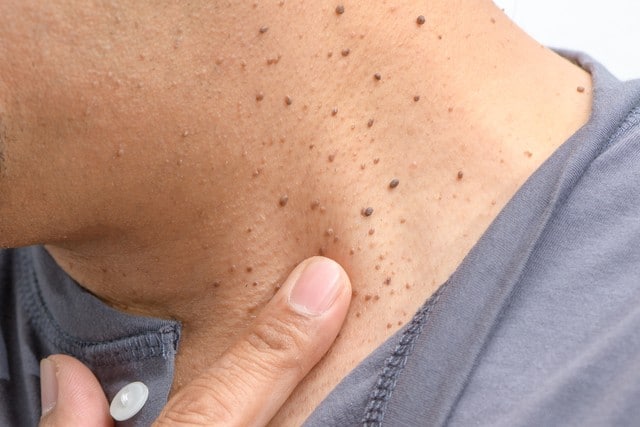What You Should Know About Skin Tags
At some time, you may have raised your arm or inspected your neck in the mirror and noticed a skin-colored development that was not there before. Typically, what you observed is probably a skin tag, considering that nearly half of U.S. citizens experience these growths throughout their lives. The older you become, the more likely you are to develop Boynton Beach skin tags. Often, these growths are innocuous and have no cause for concern. However, there are circumstances where you should visit your physician, particularly if you are unsure whether to eliminate these growths or leave them alone. Continue reading for answers to some frequently asked skin tag questions.
What Exactly Are Skin Tags?
Skin tags are merely protrusions of normal skin connected to a base or thin stalk. Typically, these growths are the same hue as the remainder of your skin, but they might occasionally be somewhat darker. The average size of a skin tag is a few millimeters or less than the diameter of a pencil eraser, but they can get larger.
What Causes Skin Tags?
Although specialists do not have a solid reason why skin tags develop, they believe it is probably due to excessive friction and aging. Typically, the growths appear in regions where clothing brushes against the skin. Additional risk factors for the development of skin tags include:
- Hormone fluctuations throughout pregnancy
- Insulin resistance concerning diabetes
- The occurrence of human papillomavirus (HPV)
Additionally, since skin tags often run in families, scientists suspect genetics may also play a role.
Are Skin Tags Hazardous?
While skin tags can be alarming, they are usually harmless. In extremely rare circumstances, a skin tag may turn precancerous or cancerous. Moreover, if your skin tag bleeds, keeps growing in size, or exhibits multiple colors, a biopsy could be necessary to rule out the possibility of cancer.
Individuals frequently mistake moles, warts, and other types of growths for skin tags. Your dermatologist or physician could identify the actual reason for your skin condition. If the development is close to your eye, reach out to an ophthalmologist.
Should Your Skin Tag Be Eliminated?
Skin tags require no therapy unless they cause discomfort or aesthetic issues. If you decide to have your skin tag eliminated, your physician will likely employ one of the following procedures:
- Cut them using a sharp instrument
- Burn using an electric current
- Utilize liquid nitrogen to freeze
Most procedures do not require anesthesia. However, if the skin tags are particularly huge or are having multiple skin tags removed, you might need an anesthetic cream.
If your physician burns or freezes your skin tags, it could take several days for the growth to fall out. Although there is no proof that removal triggers the development of additional skin tags, there is no assurance that your skin tags will not reappear.
Should You Try Removing A Skin Tag Yourself?
Although some persons successfully remove skin tags at home, it is not advised owing to the risk of infection and bleeding. If you are worried about your skin irregularities, visit your dermatologist or physician for an expert consultation.
If you have observed skin tags on your skin, you are not alone! Although skin tags are harmless, they could be unattractive, particularly if they develop in clumps. Besides, these growths can get irritated because of friction from your clothing. For a professional diagnosis and treatment of your skin tags, look no further than Nguyen Medical Group. Call the Boynton Beach, FL, office or request an appointment online today.


